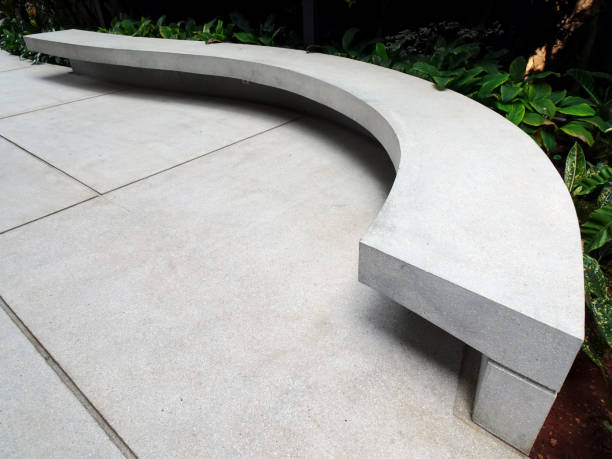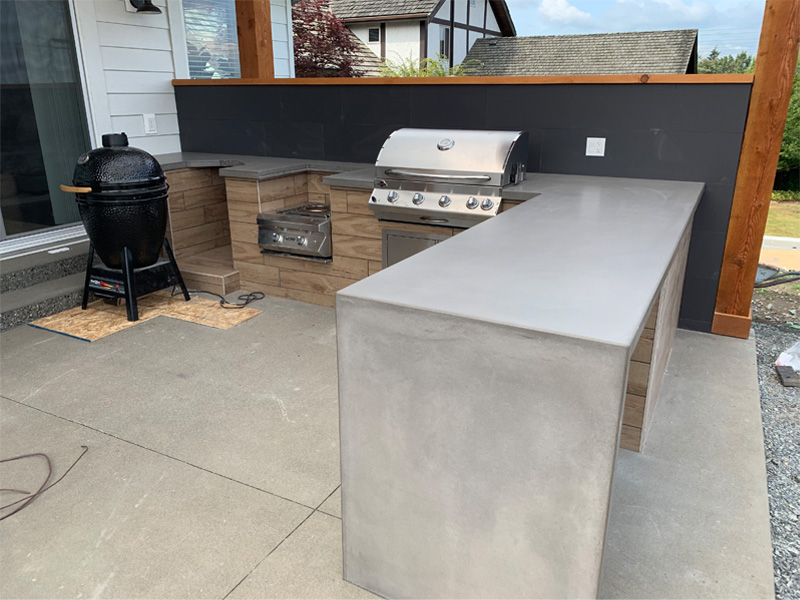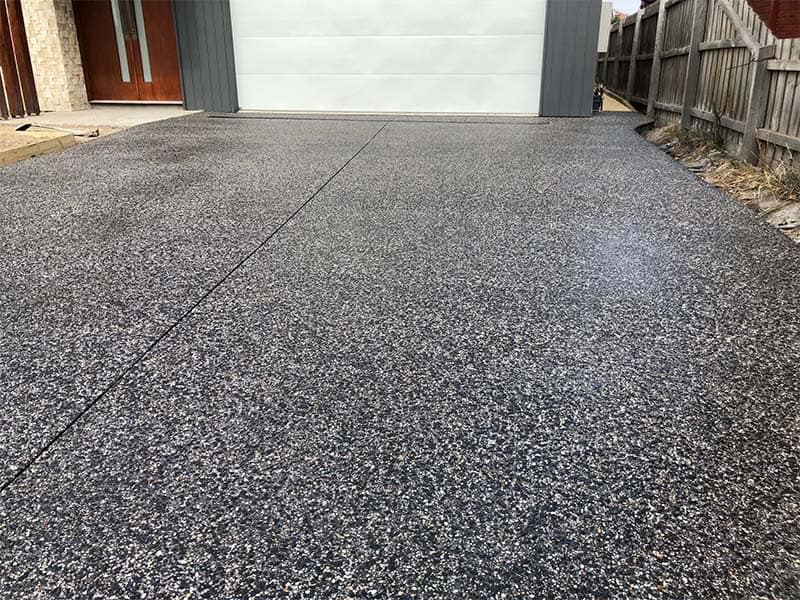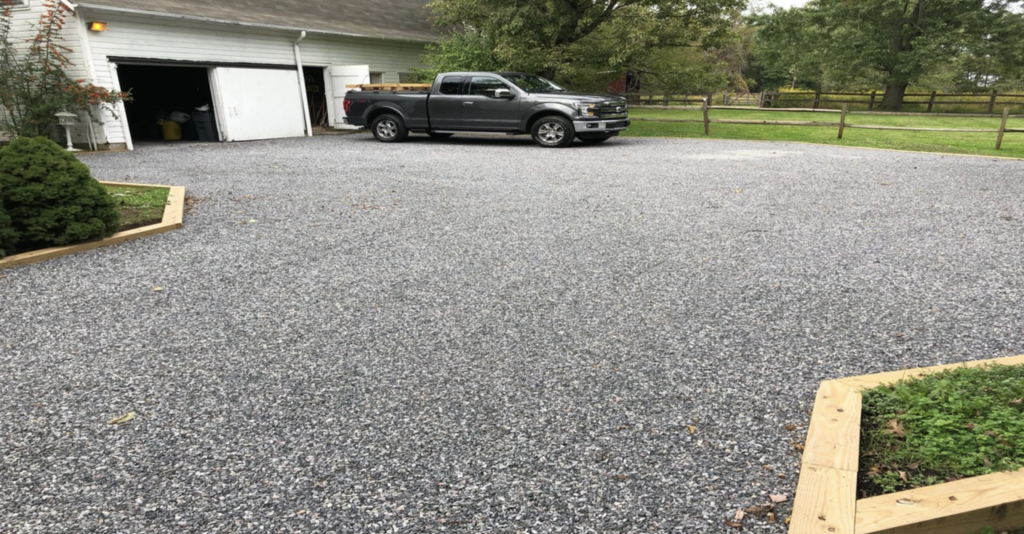Welcome to your ultimate guide on whether you need council approval for footpaths and vehicle crossings in Auckland. If you’re planning to install, modify, or widen a driveway, or make changes to a footpath outside your property, understanding Auckland Council’s regulations is crucial to avoid unnecessary fines, delays, or legal issues. Many property owners are unaware that even minor alterations to footpaths and crossings often require approval, as these areas fall under public infrastructure managed by the council. This guide will walk you through the approval process, compliance requirements, costs, and potential challenges, ensuring you have all the information needed to proceed smoothly and legally. Whether you’re a homeowner, business owner, or developer, this resource will help you navigate the rules with confidence and make informed decisions about your footpath or driveway access in Auckland.
Yes, you generally need Auckland Council approval for installing, modifying, or widening footpaths and vehicle crossings (driveway access) to ensure compliance with safety and infrastructure regulations. The approval process involves submitting an application, meeting design standards, and paying applicable fees. Failure to obtain approval may result in fines or required modifications at the owner’s expense. To check specific requirements and apply, visit Auckland Council’s official website.
Table of Contents
Understanding Footpaths And Vehicle Crossings In Auckland
When navigating property modifications in Auckland, understanding the regulations surrounding footpaths and vehicle crossings (also known as driveway access points) is essential. Whether you’re a homeowner looking to build a driveway or a business needing vehicle access, Auckland Council has strict guidelines to ensure public safety, accessibility, and infrastructure integrity. Below, we explore what footpaths and vehicle crossings are, why they matter, and how Auckland Council manages them.
What Are Footpaths And Vehicle Crossings?
In Auckland, footpaths refer to designated pedestrian pathways along public roads, ensuring safe and accessible movement for residents, commuters, and visitors. These pathways are typically constructed from concrete or asphalt and are maintained by Auckland Council to uphold pedestrian safety and connectivity across the city.
On the other hand, vehicle crossings (driveway access points) are the designated areas where private driveways connect to public roads, allowing vehicles to enter and exit properties. These crossings must be properly designed and built to meet Auckland Council’s regulations, ensuring they do not disrupt traffic flow, pedestrian movement, or stormwater drainage.
Why Are Footpaths And Vehicle Crossings Important?
Footpaths and vehicle crossings serve crucial roles in public safety, accessibility, and infrastructure management:
- Public Accessibility – Footpaths ensure that pedestrians, including those with mobility impairments, have a safe and convenient way to navigate urban and suburban areas. Well-maintained footpaths reduce trip hazards and improve walkability in Auckland.
- Safety Considerations – Properly designed vehicle crossings prevent traffic hazards by ensuring that driveways do not obstruct pedestrian pathways or create blind spots for drivers.
- Infrastructure Management – Auckland Council oversees the planning and maintenance of footpaths and crossings to ensure long-term durability and compliance with urban development standards. This prevents unauthorized modifications that could compromise road safety or result in costly repairs.
Auckland Council’s Role In Managing Footpaths And Vehicle Crossings
Auckland Council is responsible for maintaining, upgrading, and approving modifications to footpaths and vehicle crossings across the city. Their key responsibilities include:
- Approving New Footpath And Driveway Crossings – If you plan to install or modify a footpath or driveway connection, you must obtain council approval to ensure compliance with local regulations and safety standards.
- Routine Maintenance And Repairs – The council regularly inspects and maintains public footpaths to address issues such as cracks, uneven surfaces, or damage caused by tree roots.
- Enforcement Of Compliance – Unauthorized modifications to footpaths or vehicle crossings can result in fines or mandatory corrections. Auckland Council ensures that all installations meet legal and engineering requirements to maintain safety and accessibility.
- Stormwater And Drainage Considerations – When approving vehicle crossings, the council assesses the impact on drainage systems to prevent flooding or water runoff issues on public roads.
Understanding the regulations around footpaths and vehicle crossings in Auckland is essential for anyone looking to modify their property’s access. Since these infrastructures play a critical role in pedestrian safety and traffic management, Auckland Council enforces strict compliance guidelines to ensure they are built and maintained properly. If you’re planning to make changes, always check Auckland Council’s regulations to avoid fines and ensure your project meets urban development standards.

When Do You Need Council Approval?
Understanding when you need Auckland Council approval for footpaths and vehicle crossings is essential to ensure compliance with local regulations and avoid unnecessary penalties. Whether you’re a homeowner, developer, or business owner, making any modifications to public pathways or access points requires careful planning. Below, we break down the key scenarios where council approval is required and highlight any potential exemptions.
Constructing A New Vehicle Crossing (Driveway Connection To The Road)
If you are planning to build a new vehicle crossing (driveway connection to the road), you must obtain council approval before beginning construction. A vehicle crossing is the section of driveway that extends from the road curb to the boundary of a private property, allowing vehicles to safely enter and exit.
Since vehicle crossings impact pedestrian safety, traffic flow, and public infrastructure, the council enforces strict guidelines on their construction. Your application must comply with Auckland Transport’s standards, including:
- The correct width and gradient for safe vehicle access.
- Materials and surface types that meet safety and durability requirements.
- Clearances from intersections, pedestrian crossings, and utility services.
Failing to get approval before constructing a vehicle crossing could result in costly fines or even removal at your expense.
Modifying Or Widening An Existing Vehicle Crossing
If you already have a driveway but want to modify or widen the existing vehicle crossing, you will also need council consent. Common reasons for these modifications include:
- Upgrading a single-width driveway to a double-width driveway for multiple vehicles.
- Changing the alignment or slope for improved access.
- Repairing or replacing old driveways that no longer meet council safety requirements.
Since widening a driveway can affect pedestrian pathways, road traffic, and underground utilities, Auckland Council carefully assesses these applications to ensure safety and compliance.
Making Footpath Alterations In Front Of A Property
Auckland’s footpaths are considered public infrastructure, meaning any alterations or modifications require council approval. If you plan to make changes such as:
- Removing or reshaping part of a footpath for private access.
- Installing ramps, tactile paving, or accessibility features.
- Extending driveways across footpaths to reach your property.
These changes can impact pedestrians, cyclists, and other road users. Auckland Transport has specific design and material standards that must be followed to ensure public safety.
Changing The Curb Or Drainage Near Footpaths
Curb and drainage systems play a crucial role in managing stormwater and preventing flooding in Auckland’s urban areas. If your project involves:
- Lowering or removing a curb to create better access.
- Installing new drainage channels to manage water runoff.
- Replacing or modifying existing stormwater systems near your driveway.
You will need to obtain council approval to ensure compliance with Auckland’s stormwater and environmental regulations. Poorly designed drainage systems can lead to flooding, erosion, or water pooling on footpaths, creating safety hazards.
Are There Any Exemptions?
In some cases, minor repairs and maintenance work may not require council approval. Examples include:
- Fixing small cracks or surface damage on an existing footpath.
- Repainting or resealing a driveway without altering its structure.
- Cleaning and clearing drainage channels without changing their layout.
However, it’s always best to check with Auckland Council before starting any project to confirm whether approval is needed. Even if work seems minor, making unauthorized modifications could result in penalties or enforcement actions.
Securing council approval for footpaths and vehicle crossings in Auckland is not just a legal requirement—it’s a crucial step in maintaining public safety, infrastructure integrity, and compliance with city planning regulations. If you’re unsure whether your project requires approval, visit Auckland Council’s official website or consult with a professional contractor who specializes in driveway and footpath construction. Taking the right steps from the start will save you time, money, and potential legal issues down the road.
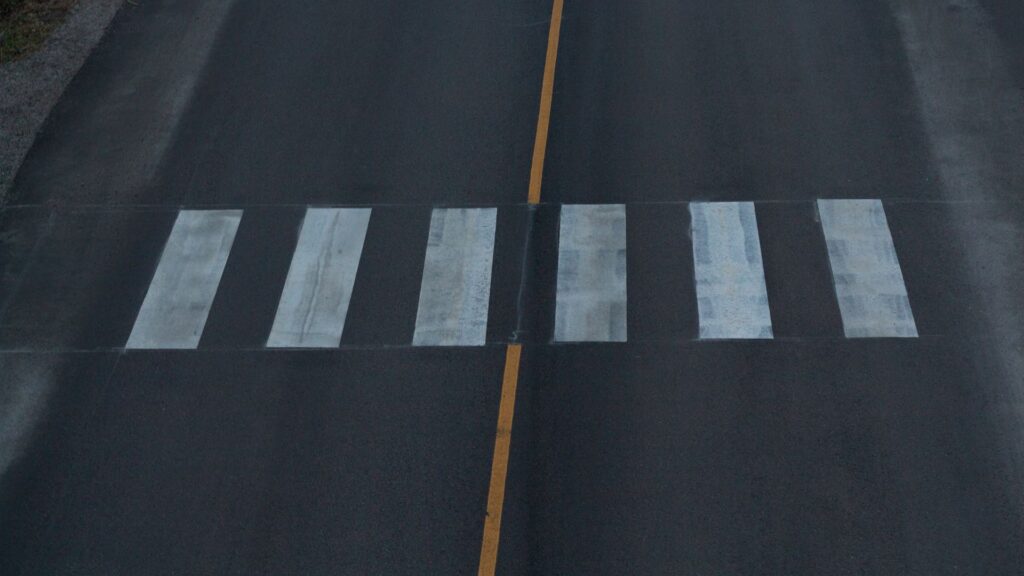
Council Regulations And Compliance Requirements
Understanding Auckland Council’s Regulations For Footpaths And Crossings
When planning to install, modify, or upgrade a footpath or vehicle crossing in Auckland, compliance with Auckland Council’s regulations is essential. These rules ensure that infrastructure projects maintain public safety, accessibility, and durability. Footpaths and crossings are considered part of Auckland’s public space, meaning any alterations must meet legal and engineering standards set by both Auckland Council and Auckland Transport.
The regulations govern the design, materials, and placement of footpaths and crossings to prevent hazards, ensure smooth pedestrian and vehicle movement, and protect public assets. If a footpath or driveway crossing does not meet compliance requirements, property owners may face fines, legal action, or be required to restore the area at their own expense.
Specific Compliance Requirements For Footpaths And Crossings
Auckland Council’s regulations specify strict design and material standards for constructing footpaths and vehicle crossings. Below are the key compliance requirements that every property owner or developer must follow:
1. Size And Material Specifications
- The width of a standard footpath should generally be 1.8 to 3.0 meters, depending on the location and expected foot traffic.
- Footpaths must be constructed using durable materials such as concrete, asphalt, or permeable pavers to withstand pedestrian use and environmental conditions.
- Vehicle crossings (driveway access points) must comply with the standard width of 3.0 to 6.0 meters, depending on whether they serve a single or multi-vehicle residence.
- All materials used must meet Auckland Transport’s construction standards to ensure long-term durability and reduce maintenance costs.
2. Safety Standards For Pedestrians And Vehicles
Safety is a top priority in Auckland’s footpath and vehicle crossing regulations. The council has specific safety standards to minimize accidents, improve visibility, and ensure accessibility for all users, including pedestrians, cyclists, and drivers.
- Pedestrian-Friendly Design: Footpaths should be smooth, slip-resistant, and free of obstructions to accommodate wheelchairs, prams, and people with mobility impairments.
- Visibility Requirements: Vehicle crossings must have clear sightlines to ensure drivers can see pedestrians before entering the roadway.
- Gradient And Slope Regulations: Slopes must comply with accessibility standards to prevent tripping hazards and accommodate individuals with disabilities.
- No Unauthorized Alterations: Property owners are prohibited from making unauthorized modifications, such as adding ramps, steps, or barriers that interfere with pedestrian movement.
3. Drainage Considerations To Prevent Flooding Or Erosion
Proper drainage planning is a crucial part of footpath and crossing construction. Poor drainage can lead to flooding, erosion, and surface damage, which can compromise the safety and longevity of public infrastructure.
- Stormwater Management: Footpaths and driveways must be designed to channel water effectively into designated stormwater drains without creating water pooling or runoff onto roads.
- Permeable Surfaces: In some areas, permeable materials such as porous pavers may be required to help reduce water buildup and promote natural drainage.
- Curb And Channel Systems: New vehicle crossings must integrate properly with existing curb and drainage systems to prevent disruption to public water flow.
- Compliance With Auckland Stormwater Standards: All drainage designs must align with Auckland Council’s stormwater management policies to protect public infrastructure and private properties.
Alignment With Auckland Transport And The Auckland Unitary Plan
The regulations for footpaths and crossings in Auckland are closely aligned with the Auckland Unitary Plan and Auckland Transport policies to ensure consistent infrastructure development.
- Auckland Transport’s Role: Auckland Transport oversees the management, maintenance, and upgrade of public roads and footpaths, ensuring they meet regional safety and accessibility standards.
- Auckland Unitary Plan Guidelines: The Auckland Unitary Plan provides the legal framework for land development, ensuring that all road infrastructure changes support urban growth, sustainability, and accessibility.
- Integration With Other Public Works: New footpaths and crossings must align with Auckland’s broader transport and urban planning strategies to ensure smooth connectivity between roads, pedestrian paths, and public transport hubs.
Final Thoughts
Ensuring that footpaths and vehicle crossings meet Auckland Council’s regulatory and compliance standards is crucial for safety, durability, and legal approval. Whether you are constructing a new driveway, modifying an existing crossing, or upgrading a public footpath, following the correct guidelines will prevent fines, reduce delays, and enhance public accessibility.
Before beginning any construction, always check Auckland Council’s official resources and consult with a professional if needed. Stay compliant, plan ahead, and contribute to a safer and more accessible Auckland!

The Application Process For Council Approval
If you’re planning to modify or install a footpath or vehicle crossing in Auckland, securing council approval is a crucial step in ensuring compliance with local regulations. The process might seem overwhelming at first, but following a structured approach can save you time, money, and potential penalties. Here’s a step-by-step guide to help you navigate the approval process smoothly.
Step 1: Check Auckland Council Guidelines
Before starting any work, it’s essential to understand the specific rules and requirements set by Auckland Council. These guidelines dictate where and how footpaths and crossings can be constructed or modified, ensuring safety and consistency across Auckland’s infrastructure.
To find the most up-to-date information, visit the Auckland Council’s Vehicle Crossing and Driveway Guidelines. This official resource provides details on construction standards, required permits, and potential restrictions.
Step 2: Prepare Necessary Documents
Once you’ve reviewed the council guidelines, the next step is gathering all required documents for your application. These typically include:
- Site Plans: A detailed drawing showing the exact location of the proposed footpath or vehicle crossing.
- Engineering Reports: If your project involves significant modifications, a structural or drainage report may be required.
- Traffic Management Plan: If your construction affects public roads or pathways, you may need approval from Auckland Transport.
- Proof of Property Ownership: A land title or legal document proving that you have the right to modify the area.
It’s advisable to consult with a licensed surveyor or engineer to ensure your plans meet all compliance requirements before submission.
Step 3: Submit Your Application Online
Auckland Council has streamlined its approval process by allowing applications to be submitted through its online portal. This system enables applicants to upload all required documents, track their application status, and receive real-time updates.
To begin your application, visit the Auckland Council Online Consents Portal and follow the step-by-step instructions for lodging your request. If you need additional guidance, the website also provides direct contact details for council officers who can assist with the process.
Step 4: Pay The Application Fees
The cost of council approval varies depending on the complexity of your project. On average, fees for a standard vehicle crossing application can range from $500 to $1,500 NZD. Additional costs may apply if site inspections, engineering assessments, or special permits are required.
Step 5: Await Assessment And Approval
Once your application is submitted and payment has been made, Auckland Council will begin reviewing your request. The timeframe for approval typically depends on the complexity of the project and the volume of applications being processed.
- Standard applications: Typically take 2-4 weeks to process.
- Complex applications requiring engineering approval: May take 6-8 weeks or longer.
During this period, the council may request additional documents or modifications to your proposal. To avoid delays, make sure your application is complete and accurate before submission.
Final Tips For A Smooth Approval Process
- Consult a professional: Working with a certified surveyor or engineer can improve the accuracy of your application and reduce the risk of rejections.
- Follow up regularly: If you haven’t received a response within the estimated timeframe, follow up with Auckland Council’s Building and Consents Team.
- Ensure compliance: Double-check that your proposed footpath or vehicle crossing meets Auckland Transport’s safety standards to avoid costly modifications later.
By following these steps, you can streamline the application process, ensure compliance with local laws, and proceed with confidence in modifying or installing your footpath or vehicle crossing in Auckland.

Costs Involved In Getting Approval
When planning to construct or modify footpaths and vehicle crossings in Auckland, it’s essential to understand the associated costs to budget effectively. Below is a breakdown of potential expenses you may encounter during the approval process:
1. Application Fees
To initiate the approval process, you must submit an application to Auckland Transport. As of July 2023, the application fee is a fixed $505.00, including GST. This fee covers the processing of your application and is non-refundable. Ensure payment is submitted alongside your application to avoid rejection.
2. Inspection Fees
Once your application is approved, Auckland Transport may require inspections to ensure compliance with standards. The vehicle crossing permit, which includes application processing and inspection, is a fixed fee of $529.00. This fee is non-refundable and covers the necessary inspections during construction.
3. Construction Costs
Beyond administrative fees, you’ll incur costs related to the physical construction of the footpath or vehicle crossing. These expenses can vary widely based on factors such as materials used, the complexity of the project, and labor charges. It’s advisable to obtain quotes from multiple contractors to ensure competitive pricing.
4. Additional Costs for Non-Compliance or Penalties
Adhering to Auckland Council’s regulations is crucial. Non-compliance can lead to additional costs, including fines or mandatory modifications. For instance, if construction begins without the necessary approvals, you may face penalties and be required to halt work until compliance is achieved. To avoid such expenses, ensure all approvals are secured before commencing any work.
Approximate Price Ranges Based on Auckland Council’s Latest Fee Structures
- Application Fee: $505.00 (fixed, non-refundable)
- Inspection Fee: $529.00 (fixed, non-refundable)
- Construction Costs: Variable; it’s recommended to obtain detailed quotes from contractors.
By understanding these costs and planning accordingly, you can navigate the approval process more efficiently and avoid unexpected expenses.

Common Challenges And How To Avoid Delays
Navigating the approval process for footpaths and vehicle crossings in Auckland can be complex, and many applicants face common obstacles that can lead to delays or even rejections. Understanding these challenges and knowing how to overcome them can save you time, money, and frustration. Below, we break down the most frequent issues encountered during the approval process and provide practical solutions to ensure a smooth and successful application.
Common Issues Applicants Face
Many property owners and developers experience setbacks when applying for council approval. Here are some of the most frequent problems:
1. Submitting Incomplete Or Incorrect Documents
One of the biggest reasons for delays is submitting an application with missing or incorrect information. Auckland Council requires specific documentation, such as site plans, engineering reports, and detailed project descriptions. If any of these documents are incomplete or inaccurate, your application may be sent back for revisions, significantly delaying the process.
Solution: Always double-check the required documents before submitting your application. It’s advisable to review Auckland Council’s resource consent requirements to ensure all paperwork is in order.
2. Not Meeting Safety And Compliance Standards
Every footpath and vehicle crossing project must adhere to strict safety and infrastructure standards set by Auckland Council. If your design does not meet these standards, your application could be rejected, forcing you to revise your plans and reapply.
Solution: Consult with a professional engineer or surveyor to ensure your plans meet all safety and compliance regulations. You can also refer to Auckland Transport’s footpath design standards for guidance on acceptable specifications.
3. Delays In Approval Due To High Demand Or Complex Cases
Auckland Council processes a large number of applications, and depending on the complexity of your project, approvals can take weeks or even months. If your project involves modifications to public infrastructure, it may require additional assessments, further extending the approval timeline.
Solution: Plan your project well in advance and submit your application as early as possible. If your case is complex, consider booking a pre-application meeting with Auckland Council to get expert advice and streamline the approval process.
Solutions And Best Practices
To minimize the risk of delays and ensure a hassle-free application process, follow these best practices:
1. Hire A Professional For Accurate Applications
Engaging a licensed surveyor or civil engineer can help ensure your application meets all council requirements. Professionals understand Auckland’s regulations and can prepare detailed, compliant documentation, reducing the chances of rejections or revisions.
Pro Tip: If you’re unsure where to find a qualified expert, check Engineering New Zealand’s directory to find certified professionals in your area.
2. Check With The Council Before Making Changes
Before making any modifications to footpaths or vehicle crossings, always verify the latest council regulations. Rules may change over time, and what was acceptable in the past may not comply with current standards.
Action Step: Contact Auckland Council’s building and consents team directly or visit their official website for up-to-date guidelines.
3. Apply Well In Advance Of Construction Plans
Processing times for approvals vary depending on the complexity of the project and council workload. Submitting your application early helps prevent delays and allows time for any necessary revisions.
Time-Saving Tip: Aim to apply at least 2–3 months before your planned construction start date. This buffer period will help accommodate any unexpected delays or additional compliance checks.
Delays in council approvals for footpaths and crossings can be frustrating, but with proper planning and the right approach, they can often be avoided. Ensuring that your documents are complete, meeting all safety and compliance standards, and consulting with professionals can significantly speed up the approval process. By following these best practices and staying informed about Auckland Council’s latest requirements, you’ll be on track to getting your project approved smoothly and efficiently.
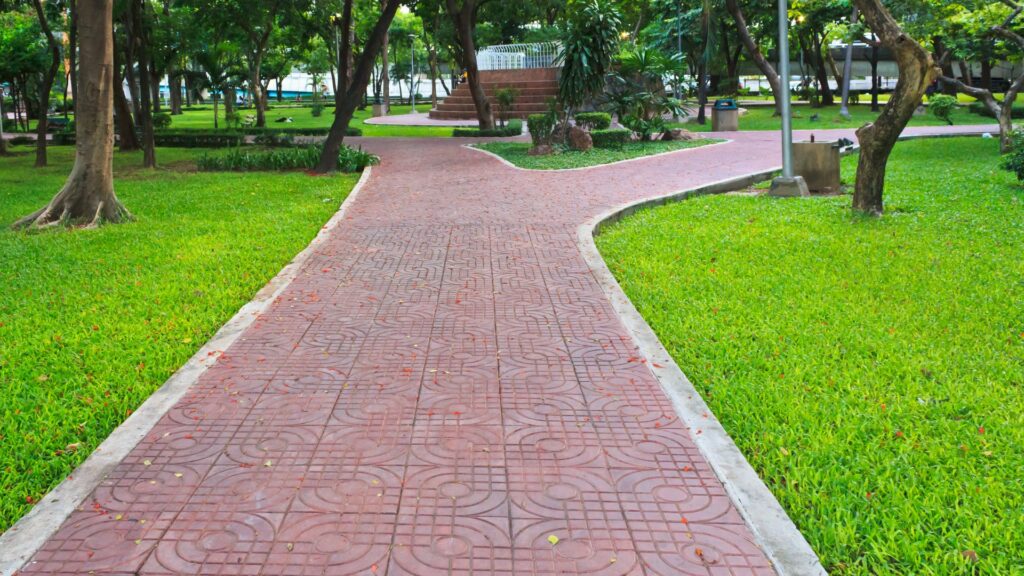
What Happens If You Don’t Get Council Approval?
Making changes to a footpath or vehicle crossing in Auckland without obtaining the necessary council approval can lead to serious consequences. Auckland Council enforces strict regulations to ensure public safety, infrastructure integrity, and accessibility. If you proceed without approval, you may face penalties, forced modifications, and legal liabilities. Below, we break down the potential risks and how to fix any non-compliant structures.
Consequences Of Unauthorized Footpaths Or Crossings
1. Fines And Penalties From Auckland Council
If you build or modify a footpath or vehicle crossing without obtaining the required permits, Auckland Council has the authority to issue fines or enforcement notices. These penalties are designed to deter unauthorized modifications that could impact pedestrian safety or public infrastructure. The fines can vary depending on the severity of the non-compliance, and in some cases, daily penalties may apply until the issue is rectified.
2. Forced Removal Or Modifications At The Owner’s Expense
If the council determines that your unauthorized footpath or vehicle crossing does not meet the necessary safety and compliance standards, you may be required to modify or remove the structure at your own expense. This process can be costly, especially if the original work did not adhere to Auckland Council’s specifications. The council may also carry out the removal themselves and bill you for the costs incurred.
Additionally, failure to comply with modification or removal orders within the given timeframe may result in further legal action. To avoid unnecessary expenses, always obtain proper approval before making any modifications.
3. Liability Issues In Case Of Accidents Or Damage
Unauthorized structures can create hazards for pedestrians, cyclists, and vehicles. If an accident occurs due to a non-compliant footpath or vehicle crossing, the property owner could be held legally responsible for any injuries or damages. This liability extends to personal injury claims, property damage, and potential legal disputes.
For instance, if a poorly constructed driveway crossing causes a trip hazard for pedestrians, the affected individual could take legal action against the property owner. This could result in compensation claims that far exceed the cost of obtaining proper approvals in the first place.
How To Rectify Non-Compliant Structures
If you’ve already made changes without council approval, there are still ways to rectify the situation. Here’s what you can do:
1. Apply For Retrospective Approval
Auckland Council allows property owners to apply for retrospective consent in some cases. This involves submitting an application similar to the standard approval process, but with additional scrutiny. The council will assess whether the existing structure meets safety and infrastructure guidelines. If it does, they may grant approval, but you may still face fines for not obtaining consent beforehand.
2. Appeal Against Council Decisions
If the council denies your retrospective approval application, you may have the right to appeal. This typically involves providing additional documentation, engineering assessments, or modifications to bring the structure up to compliance. Some cases may require legal assistance or mediation to reach a resolution.
3. Remove Or Modify The Structure To Meet Compliance
In cases where retrospective approval is not possible, you may be required to remove or modify the unauthorized structure. Working with a licensed contractor or engineer can help ensure that your modifications meet Auckland Council’s requirements. Though this may involve additional costs, it is often the safest way to avoid ongoing legal or financial risks.
Skipping the approval process for footpaths and crossings in Auckland can lead to serious consequences, including fines, forced modifications, and legal liability. However, if you find yourself in this situation, there are steps you can take to rectify the issue, such as applying for retrospective approval or making necessary modifications. To avoid these problems altogether, always check with Auckland Council before making any changes to footpaths or vehicle crossings.

Alternative Solutions: Private Vs. Public Footpaths & Crossings
When planning a footpath or vehicle crossing in Auckland, it’s crucial to understand the differences between public and private accessways. While public footpaths and crossings are managed by Auckland Council and Auckland Transport, private crossings fall under the responsibility of property owners. If you’re looking for alternative solutions to create access legally, it’s essential to follow council regulations to avoid potential legal issues. This section explores the key differences between public and private crossings, alternative access solutions, and the process of setting up temporary crossings for construction projects.
Difference Between Public And Private Footpaths/Crossings
The primary distinction between public and private footpaths or vehicle crossings lies in ownership and maintenance responsibility:
- Public Footpaths & Crossings: These are part of Auckland’s road network and are maintained by Auckland Transport. Any modifications, repairs, or new constructions must be approved by Auckland Council. Property owners cannot make changes without obtaining proper permits.
- Private Footpaths & Driveway Crossings: These are built on private property, typically leading from the main road to a residence or business. Owners are responsible for maintenance, repairs, and ensuring compliance with local zoning and building regulations. Private crossings must still meet certain council standards, especially where they connect to public roads.
If you’re unsure whether your footpath or crossing is public or private, Auckland Council provides detailed property boundary maps and zoning information to help clarify ownership.
Alternative Ways To Create Access Points Legally
If council restrictions or high costs prevent you from obtaining approval for a traditional vehicle crossing or footpath modification, consider these alternative access solutions:
- Shared Driveways & Right-Of-Ways: In some cases, multiple property owners can share a single access point to minimize impact on public infrastructure. This often applies to townhouses and subdivided properties. You may need a legal agreement to define maintenance responsibilities.
- Easements On Neighboring Properties: If direct access from the road is not feasible, securing an easement on a neighboring property can provide legal access to your land. Easements must be registered with Land Information New Zealand (LINZ) to ensure legal recognition.
- Using Existing Public Accessways: In some cases, nearby public walkways or service lanes may provide adequate access without requiring a new footpath or crossing. Always check with the council to confirm whether these access points can be legally utilized.
Each of these solutions must comply with council regulations and may require legal agreements or planning permissions, so it’s essential to seek professional advice before proceeding.
Temporary Crossings For Construction Projects
If you’re undertaking construction work that requires temporary vehicle or pedestrian access over a public footpath, you may need to apply for a Temporary Vehicle Crossing Permit. This is often required for:
- Construction vehicles needing access to a worksite.
- Heavy machinery crossing public footpaths.
- Temporary pedestrian rerouting due to excavation or roadworks.
To obtain permission, you must apply through Auckland Council’s Temporary Traffic Management Guidelines. This process ensures that any temporary access maintains public safety while minimizing damage to existing footpaths and roadways. In some cases, a bond may be required to cover any potential damage, which will be refunded if the site is restored to its original condition after construction is complete.
Understanding the differences between public and private footpaths, along with exploring alternative legal access solutions, can help homeowners and developers navigate Auckland’s strict infrastructure regulations. Whether you’re seeking a permanent driveway crossing, a shared access agreement, or a temporary crossing for construction, following council guidelines is crucial. Always consult Auckland Council or a property law expert before making any modifications to ensure compliance and avoid costly fines.
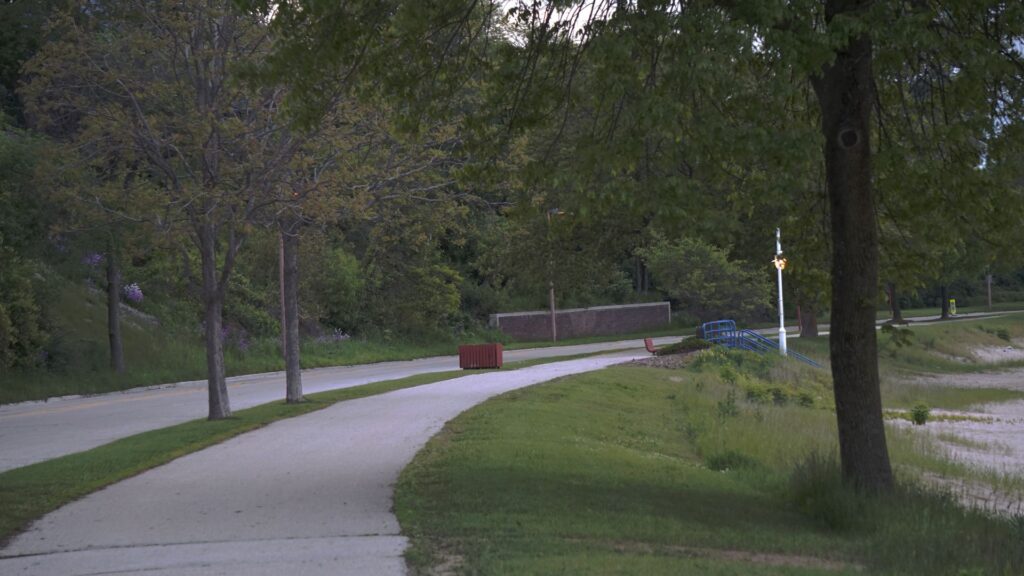
FAQs: About Do I Need Council Approval For Footpaths And Crossings In Auckland?
Do I need council approval to build or modify a footpath in Auckland?
Yes, Auckland Council requires approval for any modifications, extensions, or new installations of footpaths, as they are part of public infrastructure. Failing to get approval may lead to fines or required modifications at your expense.
When is council approval required for a vehicle crossing (driveway access)?
You need council approval if you are constructing a new vehicle crossing, widening an existing driveway, or modifying the kerb or drainage near the crossing. This ensures compliance with safety and accessibility regulations.
How do I apply for footpath or vehicle crossing approval in Auckland?
The process involves checking council guidelines, preparing necessary documents (such as site plans), submitting an application through Auckland Council’s online portal, and paying the required fees. An inspection may also be required before final approval.
How much does it cost to get council approval for a footpath or vehicle crossing?
Costs vary depending on the complexity of the project, but you should budget for application fees, inspection fees, and construction costs if hiring contractors. It’s best to check Auckland Council’s website for the latest fee structure.
How long does it take to get council approval for footpaths and crossings?
The approval process can take anywhere from a few weeks to a couple of months, depending on the complexity of the application and workload at the council. Applying well in advance of your planned construction is advisable.
What happens if I build a footpath or vehicle crossing without council approval?
Unauthorized modifications can result in fines, enforcement actions, and the requirement to remove or alter the structure at your own expense. It’s always best to seek approval before starting any work.
Are there any exemptions where I don’t need council approval?
In some cases, minor repairs or maintenance work may not require approval, but any significant modifications or new constructions generally do. Always check with Auckland Council to confirm if an exemption applies to your situation.
Can I apply for council approval myself, or do I need a professional?
You can apply for approval yourself, but hiring a professional such as a surveyor or civil engineer can help ensure that your application meets all compliance requirements, reducing the risk of delays or rejections.
What are common reasons for approval delays or rejections?
Common issues include incomplete applications, failure to meet council design standards, safety concerns, and drainage issues. Double-checking requirements and consulting professionals can help avoid delays.
Where can I find more information or assistance with my application?
Visit the Auckland Council website for official guidelines and application forms. You can also contact their customer service or consult with a qualified engineer or contractor for expert advice.
Conclusion
Ensuring compliance with Auckland Council’s regulations for footpaths and vehicle crossings is essential for avoiding fines, legal complications, or costly modifications down the road. Whether you’re installing a new driveway, modifying an existing vehicle crossing, or making changes to a footpath, following the correct approval process will save you time, money, and stress. Always check with the council before starting any project to ensure your plans meet the necessary standards and safety requirements. Taking proactive steps, such as consulting professionals like surveyors or civil engineers, can also help streamline the approval process and prevent delays. If you’re unsure about the application requirements, costs, or compliance rules, visit Auckland Council’s official resource consents page for up-to-date guidelines and application procedures.
About the Author:
Mike Veail is a recognized digital marketing expert with over 6 years of experience in helping tradespeople and small businesses thrive online. A former quantity surveyor, Mike combines deep industry knowledge with hands-on expertise in SEO and Google Ads. His marketing strategies are tailored to the specific needs of the trades sector, helping businesses increase visibility and generate more leads through proven, ethical methods.
Mike has successfully partnered with numerous companies, establishing a track record of delivering measurable results. His work has been featured across various platforms that showcase his expertise in lead generation and online marketing for the trades sector.
Learn more about Mike's experience and services at https://theleadguy.online or follow him on social media:


